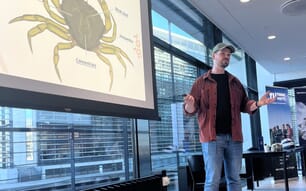Published in open access form in Reviews in Fisheries Science & Aquaculture the review has been compiled by a number of researchers at Nofima who hope that the combined knowledge will impact the relatively new snow and king crab industry as broadly as possible, and benefit the industry in specific ways. In addition, they want the review to be of interest to other scientific communities, both at home and internationally.
“By putting the pieces in the value chain together, we obtain a comprehensive picture of the research that has been done, and can view the knowledge in context. It has been very instructive,” says senior researcher Grete Lorentzen.
Along with her colleagues Gøril Voldnes, Ragnhild Dragøy Whitaker, Ingrid Kvalvik, Birthe Vang, Runar Gjerp Solstad and Sten Siikavuopio from Nofima and Marte Renate Thomassen from the University Hospital of North Norway, she has written the article under the title “Current status of the red king crab and snow crab industries in Norway.”
“It’s quite costly to buy open access for an article, but we’re doing it because we believe the knowledge should be accessible to everyone interested in it,” Lorentzen says.
“We have dealt with the entire process – from catching to the market – for two species that are relatively new and unknown in Norway. As far as we know, nothing similar has been written on snow and king crab from other places in the world,” she adds.
Although the crab industry is relatively new in Norway, it is by no means insignificant. In 2016 exports of king crab amounted to NOK 529 million (£49 million), with snow crab at NOK 338 million (£32 million) and the industry is still expanding.
In the review the researchers argue that commercial fishing for king crab and snow crab has become important for the Norwegian seafood industry, and that the industry has had to acquire knowledge on species that require technology and processing completely different from traditional fishing.
For snow crab, which has greater affinity for the cold than king crab, keeping it alive in captivity has proved to be a major challenge.



